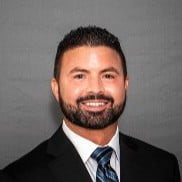


What is Dialectical Behavior Therapy?
Dialectical Behavior Therapy (commonly referred to as DBT), was developed by Marsha Linehan as a derivatives of cognitive-behavioral therapy that focuses on increased accepted for clients with substantial sensitivity (like individual diagnosed with Borderline Personality Disorder). One distinct factor in DBT is the fact that it introduces a forward-looking philosophy to the person in recovery. Individuals who complete DBT sessions should also be going home with a clear aftercare plan. DBT’s infrastructure is based on the knowledge that everything is connected together in countless ways. Utilizing this knowledge in conjunction with additional acceptance ensures a better chance of a successful treatment outcome..
Radical acceptance rests on letting go of the illusion of control and a willingness to notice and accept things as they are right now, without judging.
Philosophy Behind Dialectical Behavior Therapy
Dialectical Behavior Therapy generally operates under the basic assumptions of the Bio-Social Model of Personality Development. This model notes that some individuals are born with heightened emotional sensitivity (many of these individuals are diagnosed with Borderline Personality Disorder). When these people are not in an environment where their emotional needs are met, the rapidly alternate between emotional inhibition (in which the individual does not express his/her emotional needs) and emotional over-expressiveness (which can often be considered an aggressive display of emotional needs).
Concepts Behind Dialectical Behavior Therapy
Acceptance: Many individuals with heightened emotional sensitivity require a large degree of acceptance. Practitioners are advised to give clients with Borderline Personality Disorder bountiful amounts of acceptance, while still encouraging the client to make changes.
Mindfulness: With many clients who may have more explosive emotional tendencies, mindfulness is effective as it encourages tranquil and calm awareness of one’s own behaviors, emotional states and thoughts.

Marsha Linehan
Marsha Linehan was born in 1943 in Tulsa, Oklahoma. From a very young age, Linehan had connections with the psychiatric community. In 1961, she was diagnosed with schizophrenia at an institute in Connecticut, where she was actually living at the time. Later on in her life, she admitted that she herself had symptoms of Borderline Personality Disorder.
But despite any issues early on in her life, Linehan became a substantial figure in the field of psychology. She graduated with a Bachelors Degree in Psychology in 1968, followed by a Master’s Degree in 1970, as well as a Ph.D. in 1971 in the field of social and experimental personality psychology.
You can feel like a mental patient, but that doesn’t mean you have to act like one.
Therapeutic Techniques
Interpersonal Skill Building: This technique is designed to strengthen the ability of clients to be more assertive (but not in an explosive manner), allowing for better communication with other individuals.
Problem Solving Skills: This technique is designed for clients to effectively address and work through any issues he/she may be experiencing in a healthy manner.
Cognitive Restructuring: This technique aims to allow clients to gradually alter their mental processing of events through examining, reflecting on, and changing the way they think about particular topics.
Operant Conditioning Techniques: These techniques act as behavioral tools for meeting actions with respective stimuli (such as reward). These techniques can be employed to reinforce more desirable habits and tendencies, as well as diminish the occurrence of more negative thoughts and behaviors.
References:
Neukrug, E. (2011). Counseling theory and practice. Australia: Brooks/Cole, Cengage Learning.








